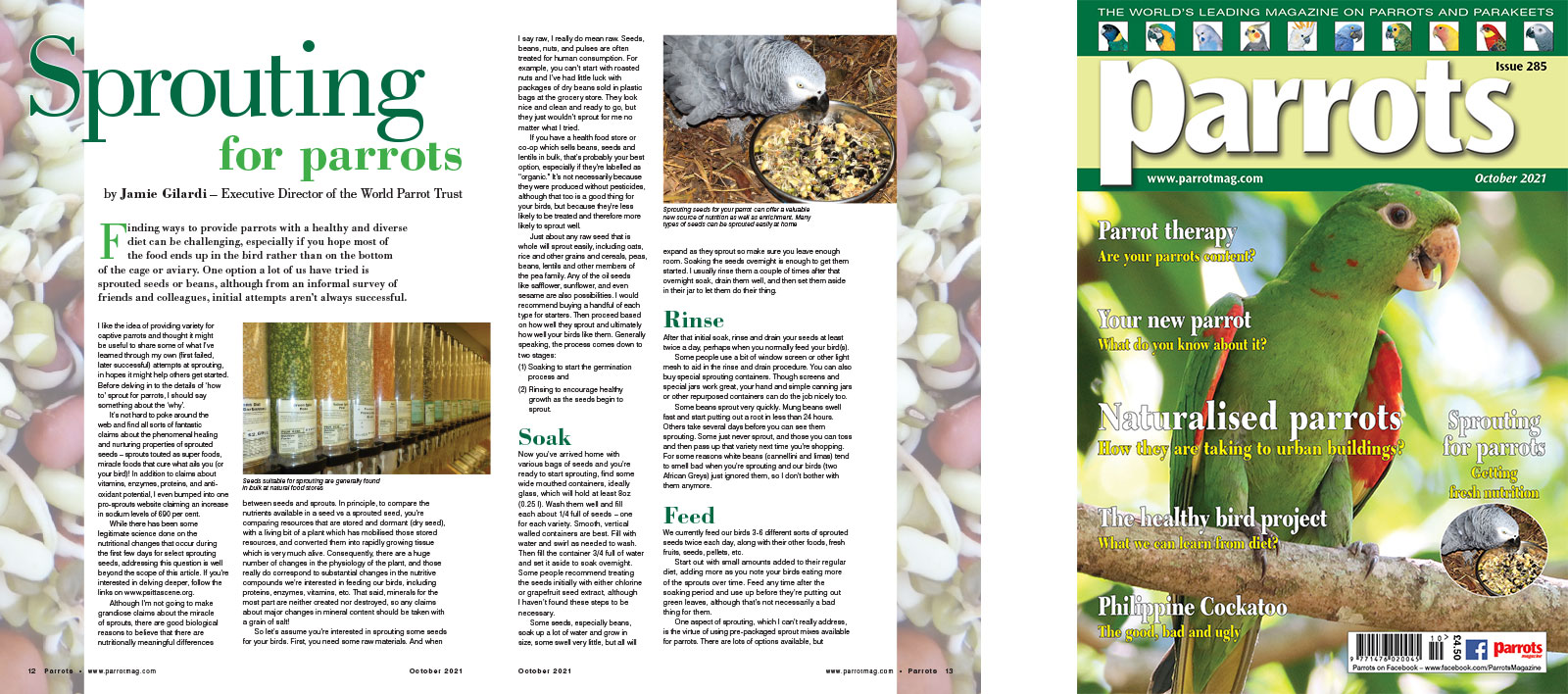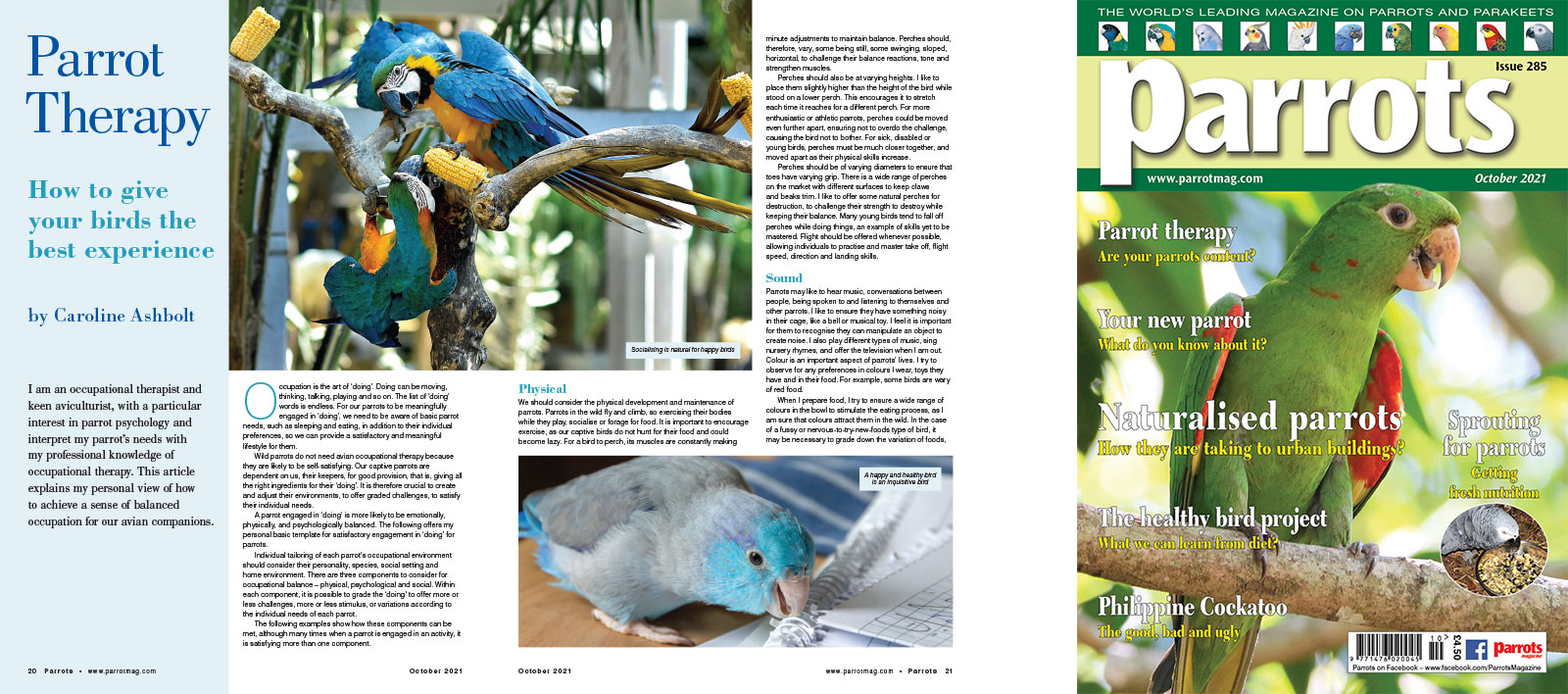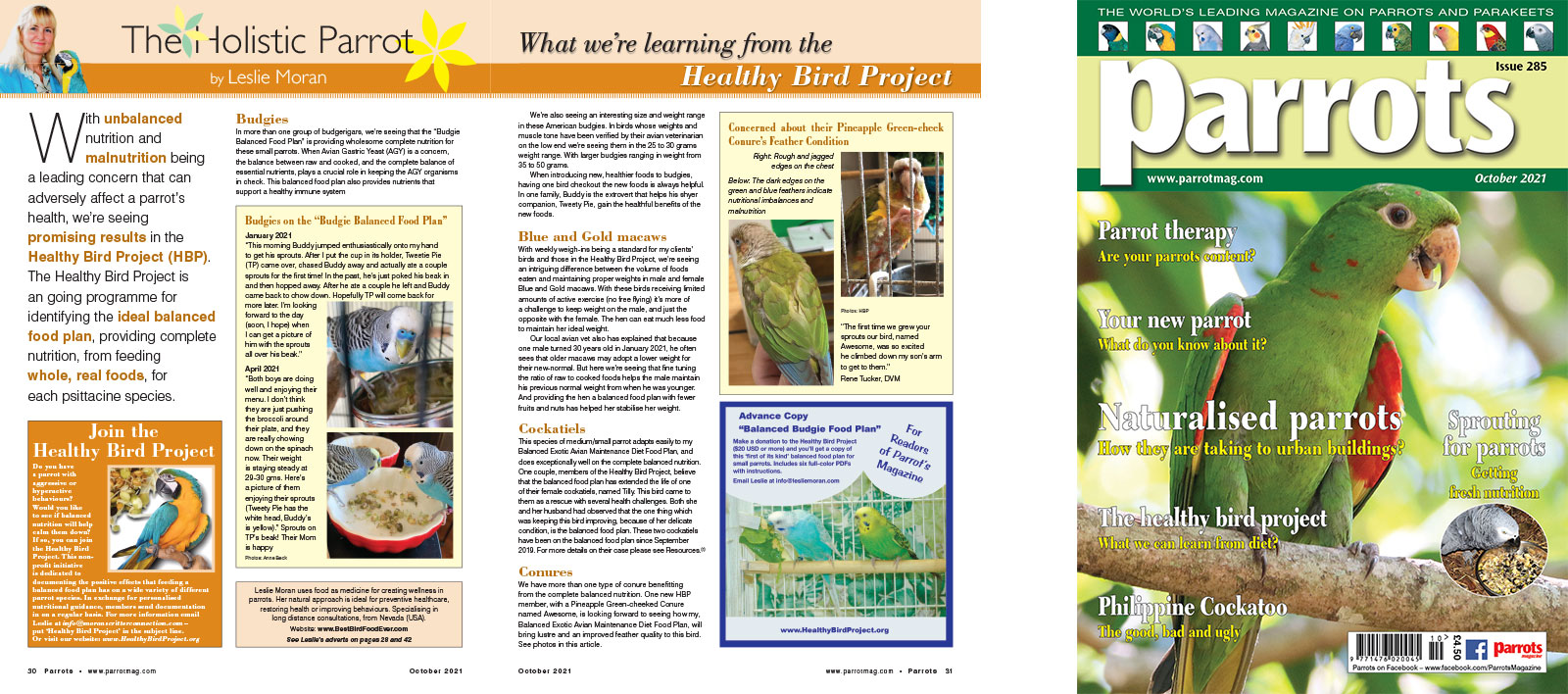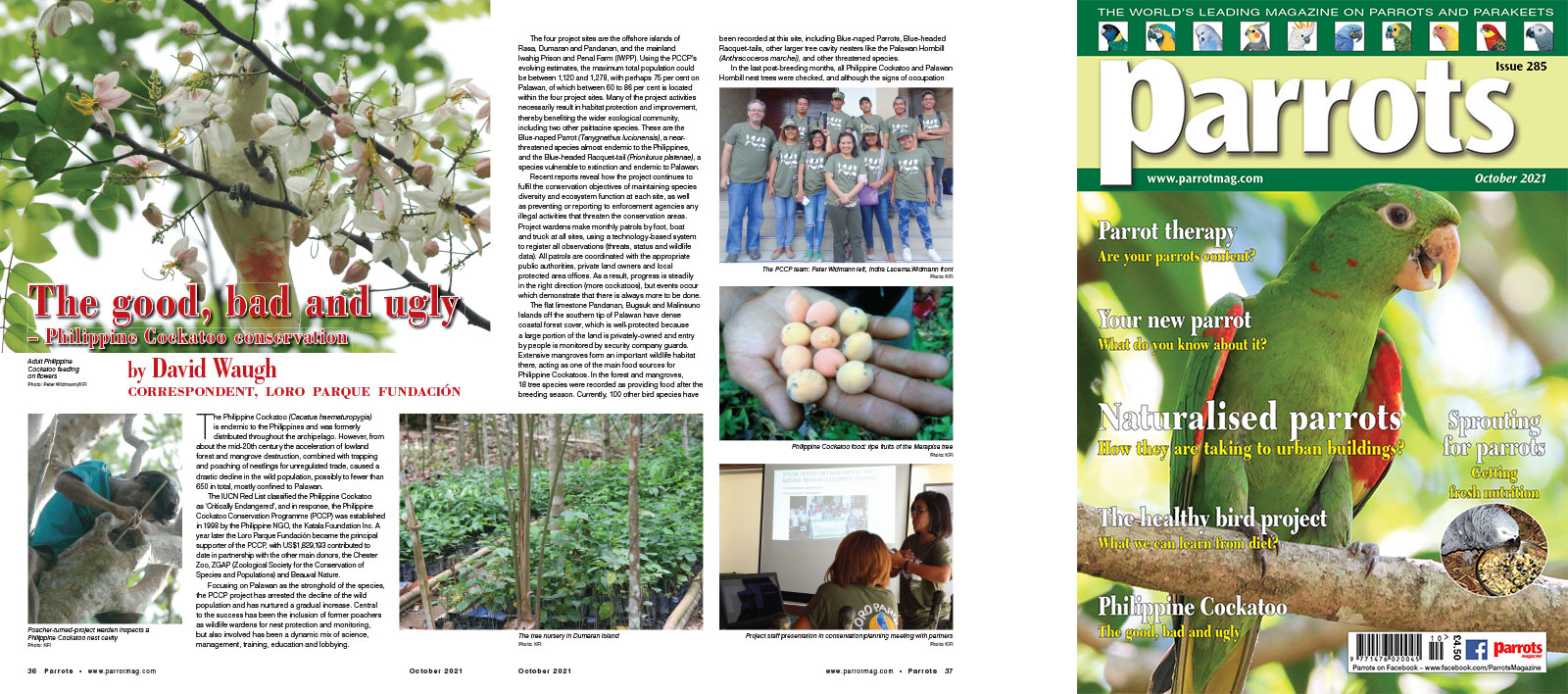
By Jamie Gilardi – Executive Director of the World Parrot Trust
Finding ways to provide parrots with a healthy and diverse diet can be challenging, especially if you hope most of the food ends up in the bird rather than on the bottom of the cage or aviary. One option a lot of us have tried is sprouted seeds or beans, although from an informal survey of friends and colleagues, initial attempts aren’t always successful.
I like the idea of providing variety for captive parrots and thought it might be useful to share some of what I’ve learned through my own (first failed, later successful) attempts at sprouting, in hopes it might help others get started. Before delving in to the details of ‘how to’ sprout for parrots, I should say something about the ‘why’.
It’s not hard to poke around the web and find all sorts of fantastic claims about the phenomenal healing and nurturing properties of sprouted seeds – sprouts touted as super foods, miracle foods that cure what ails you (or your bird)! In addition to claims about vitamins, enzymes, proteins, and anti-oxidant potential, I even bumped into one pro-sprouts website claiming an increase in sodium levels of 690 per cent.
Buy Now!

By Caroline Ashbolt
I am an occupational therapist and keen aviculturist, with a particular interest in parrot psychology and interpret my parrot’s needs with my professional knowledge of occupational therapy. This article explains my personal view of how to achieve a sense of balanced occupation for our avian companions.
Occupation is the art of ‘doing’. Doing can be moving, thinking, talking, playing and so on. The list of ‘doing’ words is endless. For our parrots to be meaningfully engaged in ‘doing’, we need to be aware of basic parrot needs, such as sleeping and eating, in addition to their individual preferences, so we can provide a satisfactory and meaningful lifestyle for them.
Wild parrots do not need avian occupational therapy because they are likely to be self-satisfying. Our captive parrots are dependent on us, their keepers, for good provision, that is, giving all the right ingredients for their ‘doing’. It is therefore crucial to create and adjust their environments, to offer graded challenges, to satisfy their individual needs.
Buy Now!

The Holistic Parrot by Leslie Moran
With unbalanced nutrition and malnutrition being a leading concern that can adversely affect a parrot’s health, we’re seeing promising results in the Healthy Bird Project (HBP). The Healthy Bird Project is an going programme for identifying the ideal balanced food plan, providing complete nutrition, from feeding whole, real foods, for each psittacine species.
In more than one group of budgerigars, we’re seeing that the “Budgie Balanced Food Plan” is providing wholesome complete nutrition for these small parrots. When Avian Gastric Yeast (AGY) is a concern, the balance between raw and cooked, and the complete balance of essential nutrients, plays a crucial role in keeping the AGY organisms in check. This balanced food plan also provides nutrients that support a healthy immune system.
We’re also seeing an interesting size and weight range in these American budgies. In birds whose weights and muscle tone have been verified by their avian veterinarian on the low end we’re seeing them in the 25 to 30 grams weight range. With larger budgies ranging in weight from 35 to 50 grams.
Buy Now!

by David Waugh, Correspondent, Loro Parque Fundación
The Philippine Cockatoo (Cacatua haematuropygia) is endemic to the Philippines and was formerly distributed throughout the archipelago. However, from about the mid-20th century the acceleration of lowland forest and mangrove destruction, combined with trapping and poaching of nestlings for unregulated trade, caused a drastic decline in the wild population, possibly to fewer than 650 in total, mostly confined to Palawan.
The IUCN Red List classified the Philippine Cockatoo as ‘Critically Endangered’, and in response, the Philippine Cockatoo Conservation Programme (PCCP) was established in 1998 by the Philippine NGO, the Katala Foundation Inc. A year later the Loro Parque Fundación became the principal supporter of the PCCP, with US$1,829,193 contributed to date in partnership with the other main donors, the Chester Zoo, ZGAP (Zoological Society for the Conservation of Species and Populations) and Beauval Nature.
Focusing on Palawan as the stronghold of the species, the PCCP project has arrested the decline of the wild population and has nurtured a gradual increase. Central to the success has been the inclusion of former poachers as wildlife wardens for nest protection and monitoring, but also involved has been a dynamic mix of science, management, training, education and lobbying.
Buy Now!




